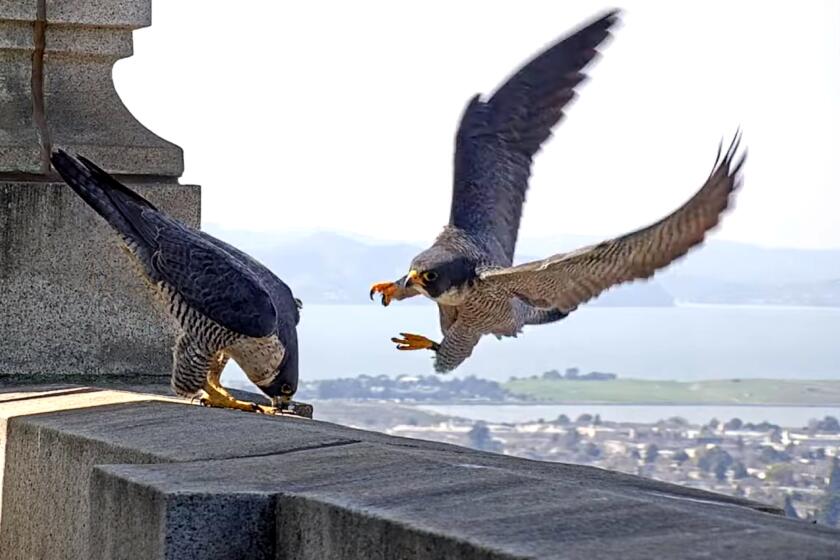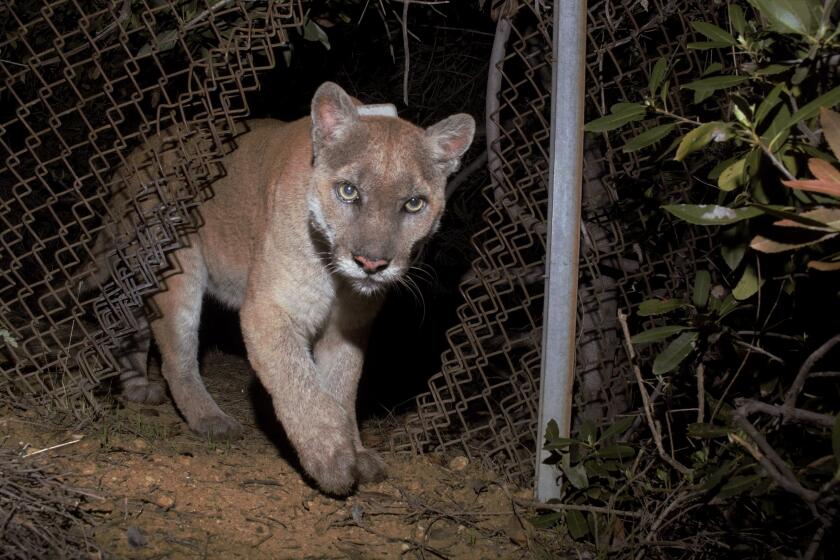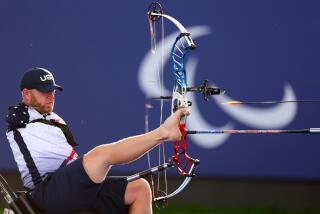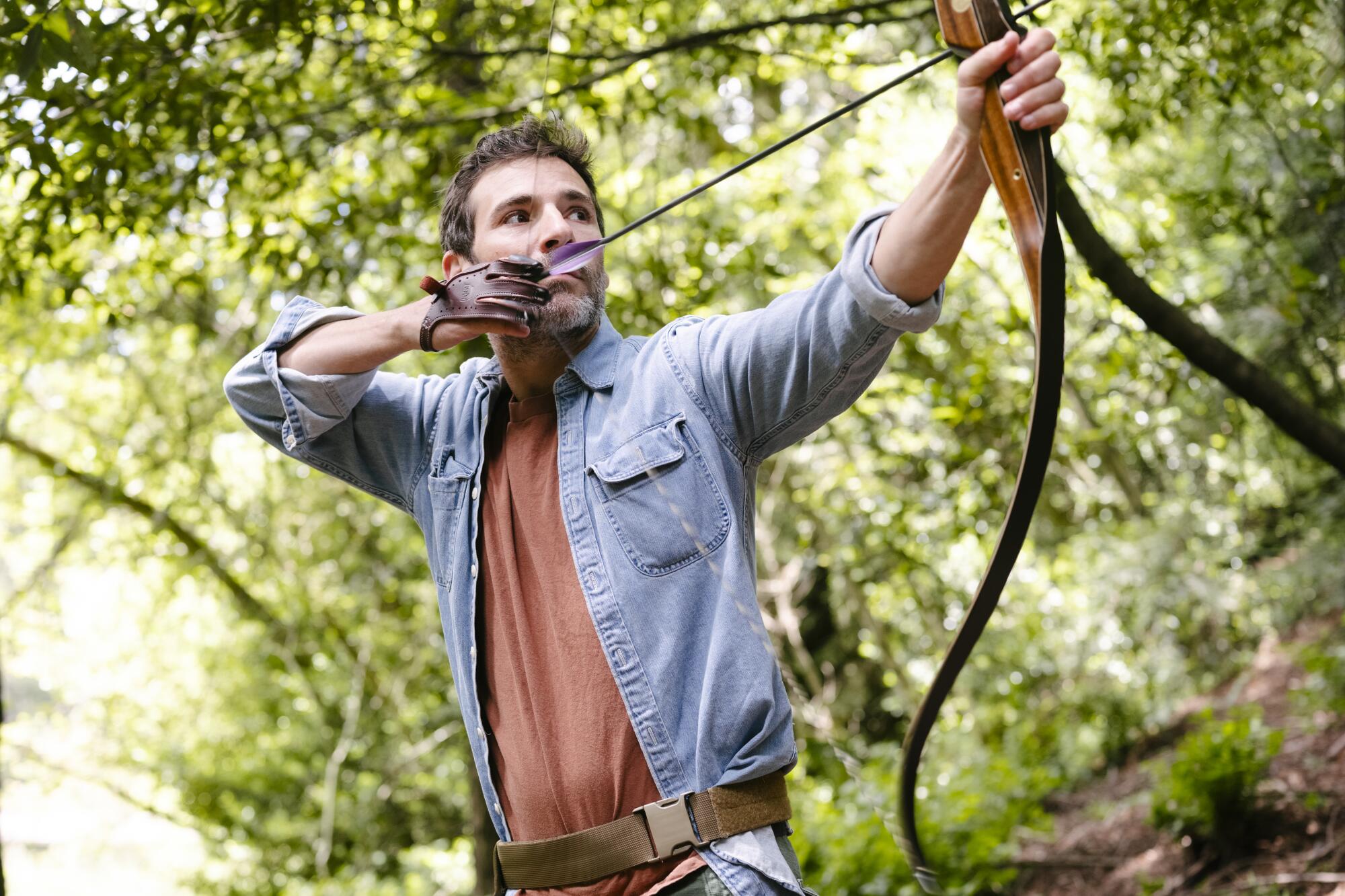
Monday mornings are great if you dig the feeling of being shot out of a cannon. Immediately upon waking, start getting a feral 5-year-old dressed, fed, brushed and sun-screened. Pack a lunch while stealing glances at your phone to catch up on all the emails, Slack messages and news events you missed over the weekend. Shepherd the kid and all her stuff to school.
Next, there’s a gantlet of phone and Zoom meetings. First, the daily touch-base call with other managers. Then, check-in calls with everyone on your team. Then another managers’ call to touch base on the updates from the check-ins.
And, in between calls, target practice: 10 arrows per round, at a distance of 10 to 30 yards.
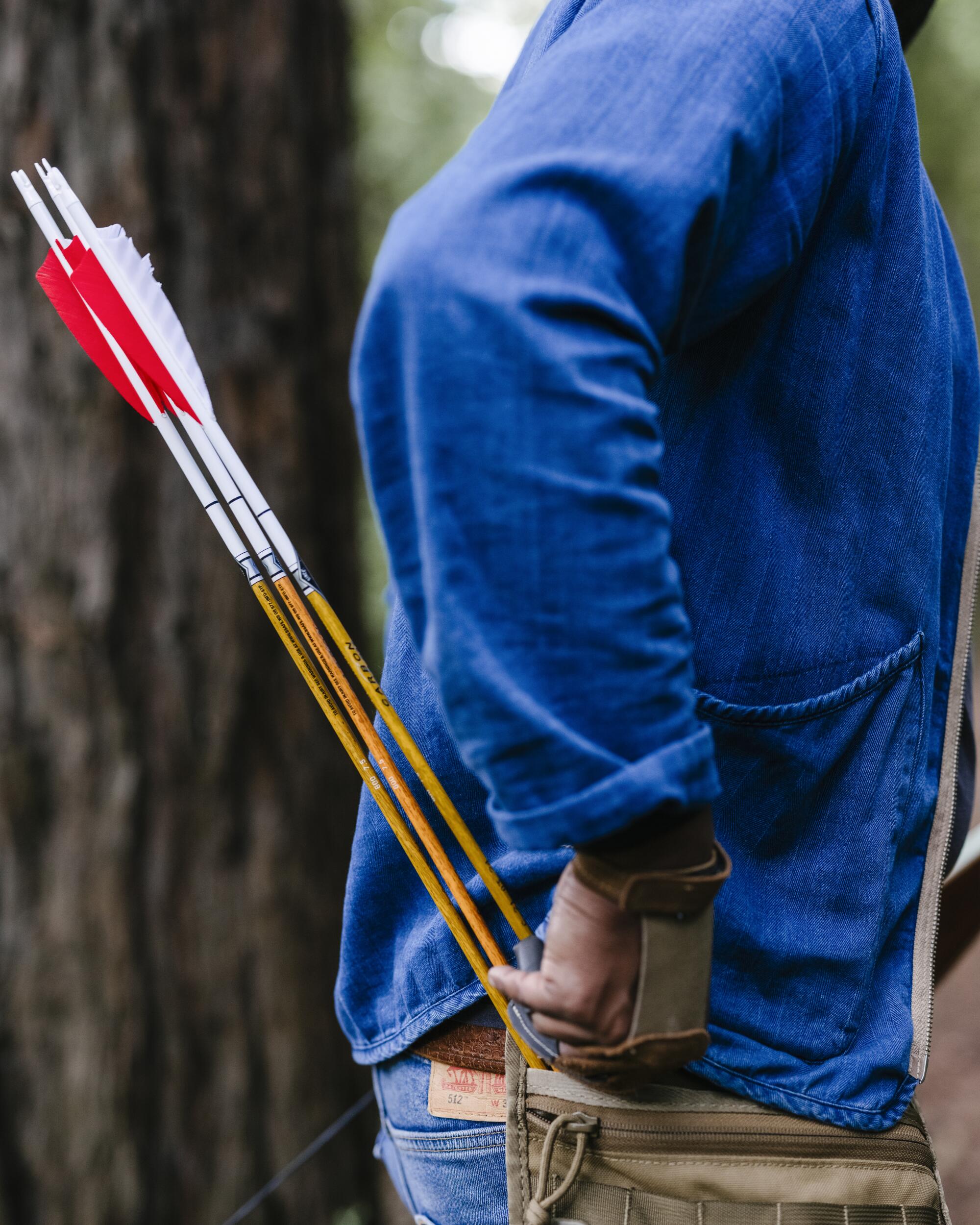
Most Mondays, I content myself with shooting at the target bag in the corner of my backyard. If it’s a fine day, I might drive a mile to the archery range where the UC Berkeley Olympic hopefuls train and take my calls there. Once in a while, I’ll even shoot while I take a call.
Fit the arrow to the string. “Oh yeah?” Draw. “Interesting.” Anchor. “When’s that happening?” Release. ThhhhhWOP.
When the pandemic hit, a lot of people got into baking sourdough or re-watching “The Sopranos.” I bought a bow. I’ve always been a tad apocalyptic in my thinking, and the supermarket shortages and general sense of dread triggered something primal in me: If things got really bad and we had to take to the woods, how would I feed my family?
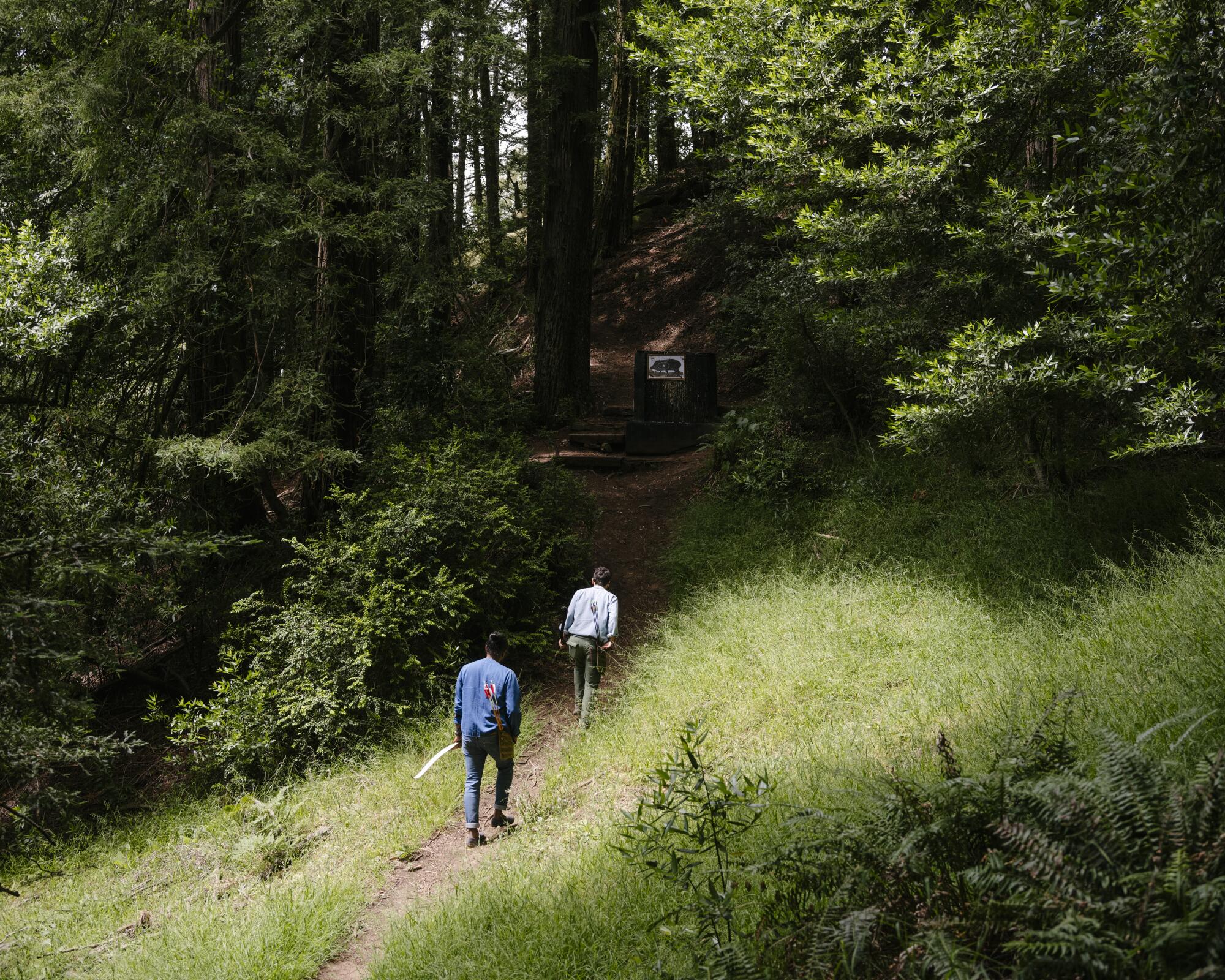
Millions of Americans thinking along similar lines drove a historic run on guns and ammo. I had no desire to be part of that grim phenomenon, but a bow? That seemed like me. Growing up in Wisconsin, I’d learned archery at summer camp and in high school gym class and remembered being OK at it.
I found a used beginner bow for $60, accessories included, on Craigslist. The limbs were warped, the arrows mismatched. But after shooting a round with them, I was hooked. The pleasure is hard to describe, but it has something to do with the hiss of an arrow sizzling through the air and the smack when it hits the target: ThhhhhWOP.
Nesting in UC Berkeley’s bell tower, peregrine falcons Annie and Grinnell always seemed to soar above the world of human drama. In the last year, all that changed.
I talked my friend Sai into buying a bow and we’d meet up at the UC Berkeley range at the end of the workday or drive up into the Oakland hills to a marvelous walking course where we could shoot at paper pictures of bears and turkeys arrayed along the ridgeline. Quickly, we were shopping for better bows and arrows, reading archery blogs for technique tips and talking earnestly about whether we needed our own fletching jig for replacing damaged feathers.
Mechanically, archery is simple compared to most sports. Done right, it’s the same exact action every time. If you’re pointing your arrow in the right direction and you don’t do anything to throw off that aim — squeezing the grip too tight, say — it will hit its mark.
As it turned out, I was still OK at archery. But as I would learn, improving beyond just OK would require reckoning with the part of my mind that drove me to seek it out in the first place.
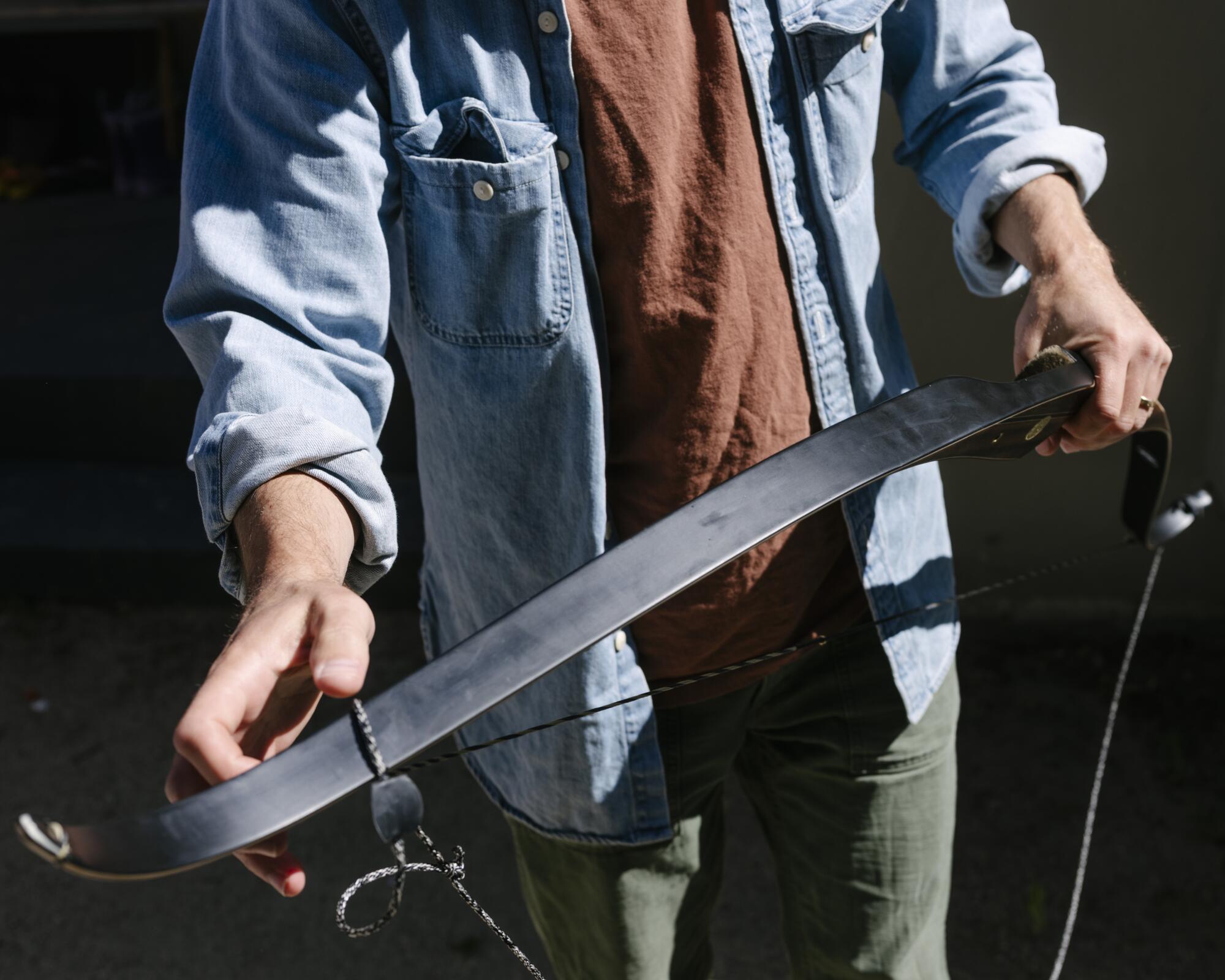
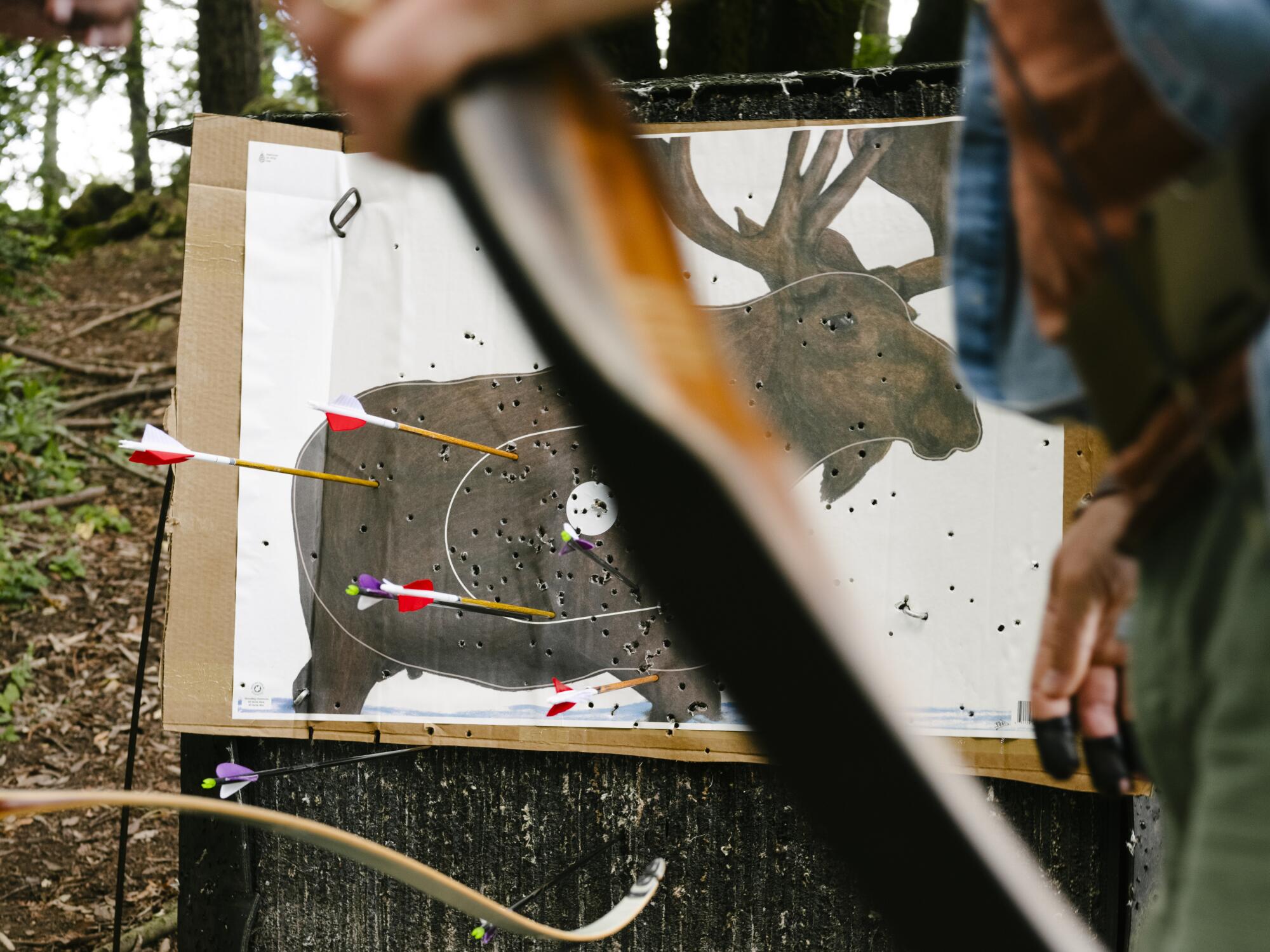
Archery is older than history itself, with evidence of its practice going back deep into the Stone Age. It’s so old that it’s been in decline for 500 years, since the advent of firearms rendered bows obsolete on the battle field. As a sport, however, it enjoyed a renaissance in the 1950s and ’60s with the invention of the compound bow (the kind with all the cables and pulleys) and other advances in technology and design that made shooting more accessible.
It may be making another comeback thanks to the pandemic, says Chriss Bowles, president of the California Bowmen Hunters/State Archery Assn. Firm numbers are hard to come by, but Oranco Bowmen in Chino, where Bowles is range captain, has increased its membership by more than 30% since March 2020.
“People want to be together and they want to be outside,” he said. He also attributed some of the popularity to the survivalist anxieties that ensnared me: “If you do find yourself in a ‘Hunger Games’ scenario, are you capable of following through with it?”
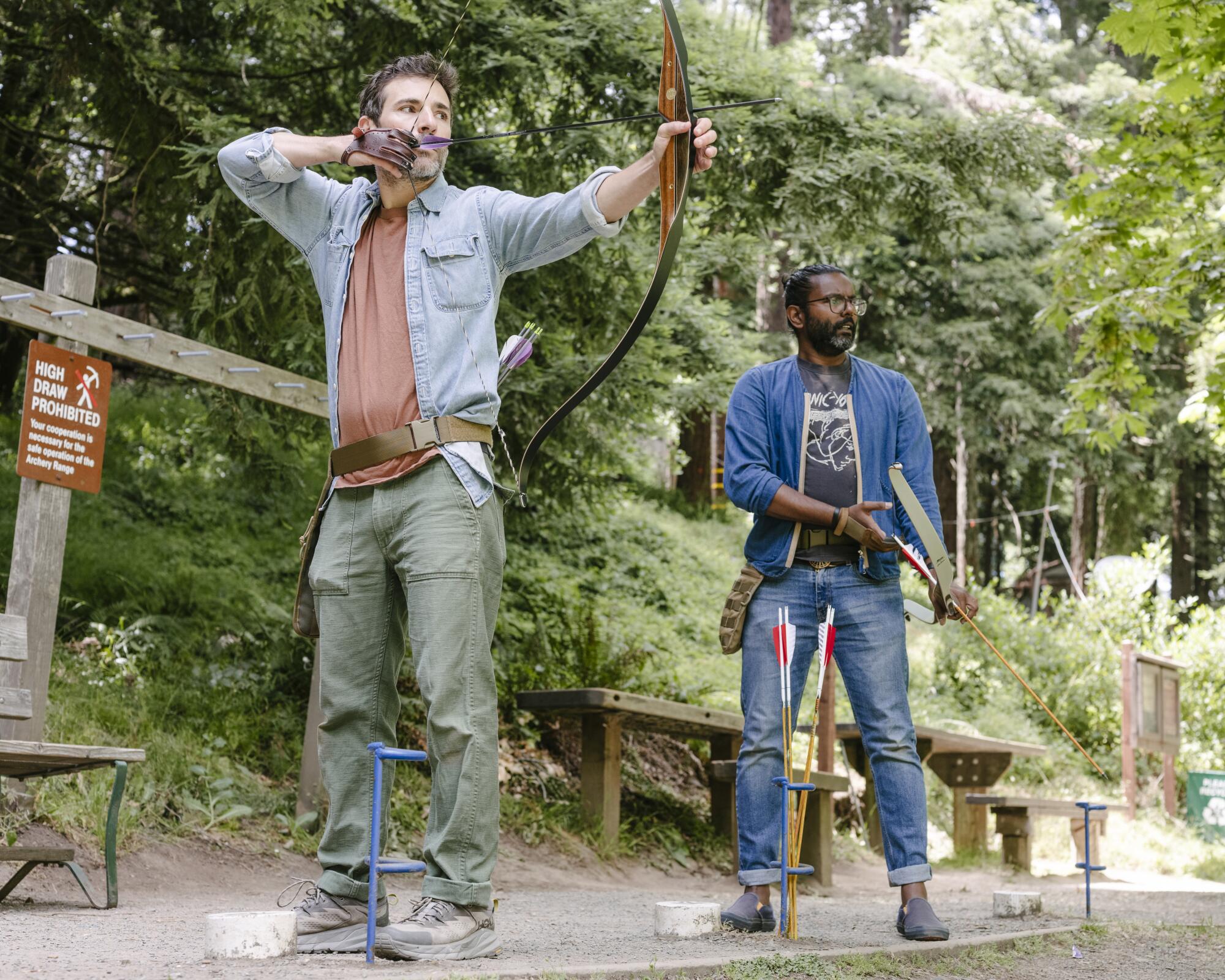
For fans of modernity, there’s no shortage of gear to help with accuracy — fiber-optic sights, laser range-finders, stabilizers. But I quickly discovered that what I crave from archery is simplicity: the pure feel and atavistic beauty of a single-piece wooden recurve bow, aimed without sights or other accoutrements — instinctively — with both eyes open. Many traditional archers favor the unfussiness of instinctive aiming, but it requires a lot of practice to do well.
And I needed the practice, judging from my scattershot results. It wasn’t until I put the target bag in the corner of my small backyard, where a stucco wall meets an ivy-covered wooden fence, and began shooting at it daily that I got a taste of anything that felt remotely like the beginnings of mastery.
Angelenos can’t help but see themselves in P-22. He’s carved out a life in a crowded city. And though he’s still handsome for his advanced age, he’s terminally single.
Shooting hundreds of arrows a week under near-identical conditions, I started to notice the small variations in my actions and connecting them to outcomes. Overdrawing, or pulling the arrow back past my anchor point — when the tip of my index finger touches the corner of my mouth — caused misses to the left. Underdrawing produced low shots; a plucked release, high ones.
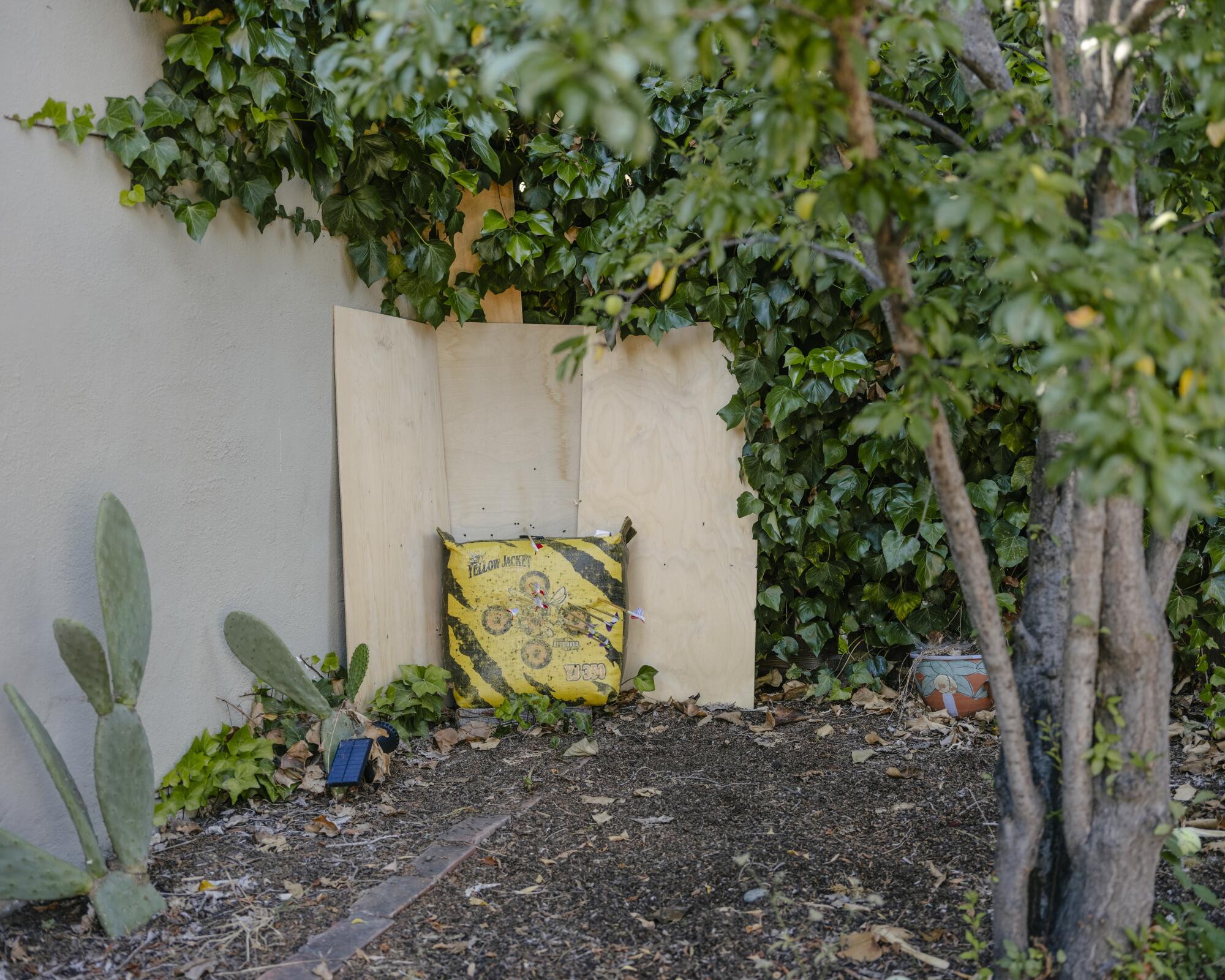
Often, when I replayed bad shots in my mind to dissect them, I discovered I had released an arrow without an act of conscious volition. It was as if my fingers were in charge of deciding while my mind ran downrange to see where it hit.
Racing ahead in my thoughts to escape moments of even the mildest discomfort is a bad habit of mine. On the phone with an old friend, I’ll say, “Well, it’s been great talking to you …” when the conversation is still warming up. Every year or two, I’ll try meditation for a few weeks, only to find myself using the time making mental to-do lists.
To improve as an archer, I needed to break this habit. I needed to learn to slow down, settle into the moment and bring my actions into full awareness. The problem is — it’s hard. Holding a bow steady at full draw is like hanging in a chin-up: It’s not something you can do for very long, over and over again. As I seek a moment of mental and physical stillness to observe and correct my form, I can feel my left arm beginning to wobble and my string fingers yelling at me to just hurry up and LET GO ALREADY.
Years ago, during a period that involved the death of my sister and the end of my first marriage, I began seeing a therapist. I came to her with the feeling that my life was a runaway train, that I had to act decisively but was paralyzed by the fear that any action I took would bring disaster. Week after week, she simply coached me to be patient and do as little as possible, to avoid moving from a sense of panic, until the sense of crisis dispersed. As, gradually, it did.
The world right now offers no shortage of things to panic about. Should I pull my kid out of school before the next COVID wave or school shooting? Move my family out of California before the next fire season? Should I hoard toilet paper or batteries or bitcoin against the next economic meltdown? These are all real questions, of course — which is exactly why they deserve the attention of a calm, quiet mind.
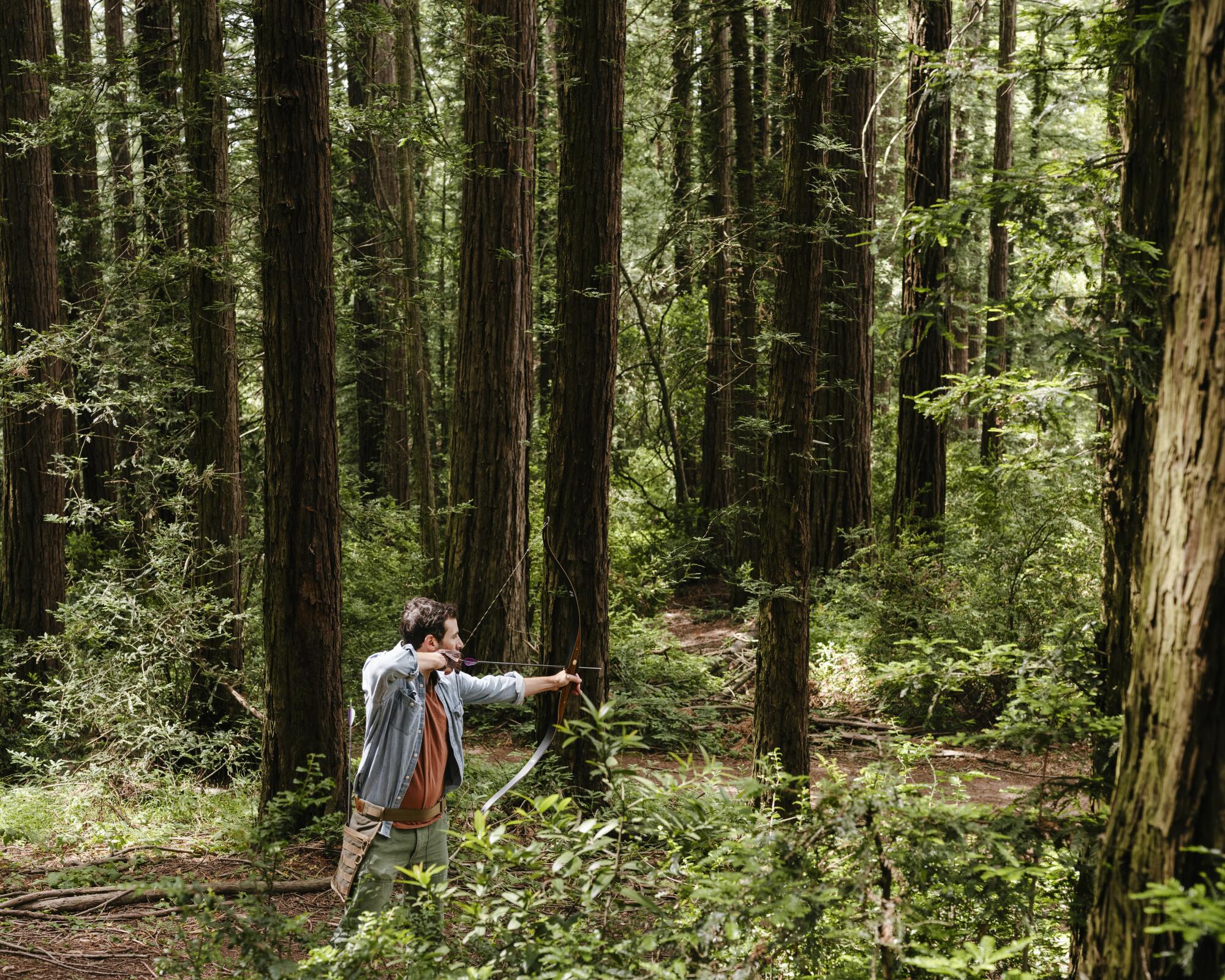
And so, on Monday mornings or whenever I have that out-of-a-cannon sensation, I make a point to retrieve my bow from its case, bend its limbs and slip the string loops over the tips, strap on my hip quiver and practice finding that elusive moment of stillness.
Draw. Anchor. Release. ThhhhhhWOP.
More to Read
Sign up for The Wild
We’ll help you find the best places to hike, bike and run, as well as the perfect silent spots for meditation and yoga.
You may occasionally receive promotional content from the Los Angeles Times.
